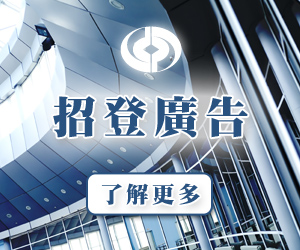The official signing of the Regional Comprehensive Economic Partnership (RCEP) marked the birth of the free-trade zone with the largest population, the most sizable economy, and the biggest growth potential in the world. Hong Kong has frequent connections with all RCEP signatories. The Ministry of Commerce has also expressed its support for Hong Kong’s entrance to the partnership in accordance with the agreed requirements and based on the actual development needs of Hong Kong. It is hoped that new supply chains can be opened up and Hong Kong can further expand new trade and finance landscapes by being part of RCEP.
Edward Yau: Hong Kong Envisions Early Entry to RCEP
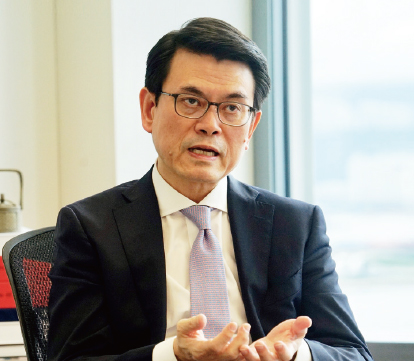
 According to Edward Yau, Secretary for Commerce and Economic Development, Hong Kong has always been a staunch supporter of trade and investment liberalization. So far, Hong Kong has signed eight free trade agreements with 20 economies as well as 22 investment treaties with 31 overseas economies. The SAR will continue to forge more relevant agreements and treaties with individual economies on the regional level.
According to Edward Yau, Secretary for Commerce and Economic Development, Hong Kong has always been a staunch supporter of trade and investment liberalization. So far, Hong Kong has signed eight free trade agreements with 20 economies as well as 22 investment treaties with 31 overseas economies. The SAR will continue to forge more relevant agreements and treaties with individual economies on the regional level.
“As a major financial and trade center as well as a transportation hub of the region, Hong Kong has already signed high-quality free-trade agreements with 13 of the RCEP participating economies. We are well placed to be part of RCEP.” Yau highlighted that the total trade between Hong Kong and the aforementioned 13 RCEP participating economies amounted to USD 765.5 billion in 2019, accounting for 71% of Hong Kong’s total trade.
As such, he reckoned that joining RCEP is an important milestone for Hong Kong’s further participation in regional economic cooperation. This will not only facilitate Hong Kong’s further integration into the regional industry chain and strengthen the economic, trade, and investment ties between Hong Kong and RCEP participating economies in the region, but also bring benefits to Hong Kong’s goods and enterprises under the relevant measures in RCEP. All these could help lower the costs of trade and bring about new opportunities for Hong Kong’s goods and enterprises to expand their markets in the region.
Positive response to Hong Kong’s keen interest in joining RCEP
 Yau said that the HKSAR government has indicated to individual RCEP participating economies its keen interest in joining RCEP as early as in 2018. He had also written to various member economies in November 2019 to reiterate Hong Kong’s interest in joining RCEP, which received positive responses. Yau wrote again to participating economies end of last year to reiterate the territory’s interest in joining. “The government is actively engaging individual RCEP participating economies for early commencement of discussions on Hong Kong’s accession with the aim to be among the first batch of economies joining RCEP after its entry into force.”
Yau said that the HKSAR government has indicated to individual RCEP participating economies its keen interest in joining RCEP as early as in 2018. He had also written to various member economies in November 2019 to reiterate Hong Kong’s interest in joining RCEP, which received positive responses. Yau wrote again to participating economies end of last year to reiterate the territory’s interest in joining. “The government is actively engaging individual RCEP participating economies for early commencement of discussions on Hong Kong’s accession with the aim to be among the first batch of economies joining RCEP after its entry into force.”
RCEP has a profound impact on the global trade system. In particular, it would further propel the internationalization of RMB. Yau explained that the Mainland is the largest economy amongst RCEP participating members. It is expected that RCEP would forge a conducive environment to promote cross-boundary RMB trade settlement and investment, thereby elevating the level of RMB usage in the region, and Hong Kong could put its function as an offshore RMB clearing center to full play.
Hong Kong’s position fortified by increased volume in RMB settlement
“Hong Kong has been supporting various types of cross-boundary and offshore RMB trading activities. In Hong Kong, our offshore RMB financial and foreign exchange markets as well as various mutual market access schemes would provide market participants with diversified options and convenient channels for their RMB risk management and financial investments.” Yau pointed out that Hong Kong processed over RMB 5.7 trillion worth of RMB trade settlements in the first 11 months in 2020, which was an increase of 20% compared to the same period in 2019. Hong Kong also has the world’s deepest offshore RMB liquidity pool of over RMB 700 billion. The government will closely monitor the development of RCEP and continue with our efforts to further promote market development with a view to consolidating Hong Kong’s position as a global hub for offshore RMB business.
Nicholas Kwan: RCEP is set to Accelerate Trade in the Region
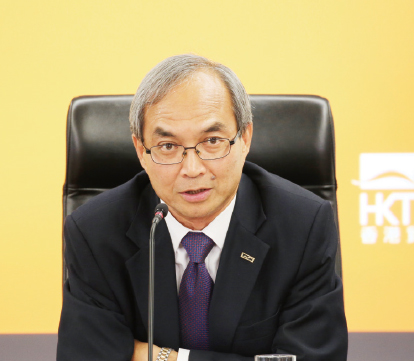
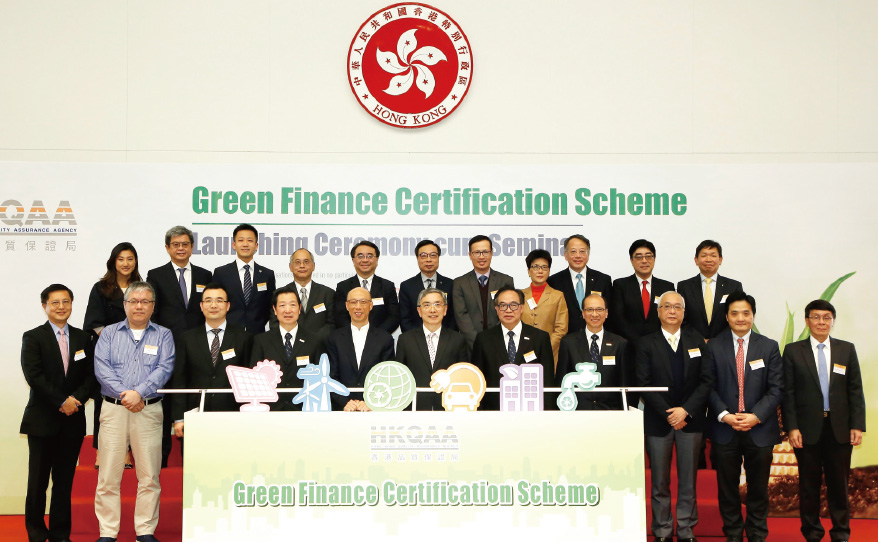 The RCEP is regarded as the free trade zone that not only covers the world’s largest population and largest economy, but also has the most potential for development. Nicholas Kwan, Director of Research of the Hong Kong Trade Development Council (HKTDC), said it is remarkable that, amid the COVID-19 pandemic, 15 countries in the Asia-Pacific region jointly signed an agreement that promotes intra-regional trade, and it is expected that this would bring benefits to non-member Hong Kong.
The RCEP is regarded as the free trade zone that not only covers the world’s largest population and largest economy, but also has the most potential for development. Nicholas Kwan, Director of Research of the Hong Kong Trade Development Council (HKTDC), said it is remarkable that, amid the COVID-19 pandemic, 15 countries in the Asia-Pacific region jointly signed an agreement that promotes intra-regional trade, and it is expected that this would bring benefits to non-member Hong Kong.
According to Kwan, RCEP member countries account for nearly one-third of the world’s GDP and trade figures. The significance of the free trade agreement is that it covers the region’s developed, developing and relatively backward economies, and provides the latter with flexible treatment. Moreover, although most member countries have long established free trade agreements, the provisions of the RCEP go beyond such agreements.
Mutual tariff concession and single rule of origin
“It is particularly noteworthy that Japan has not previously had any free trade agreements with either China or South Korea, its major trading partners. According to the RCEP agreement, the percentage of duty-free products between Japan and China is set to rise from the current 8% to about 86%, and the percentage of Japan’s exports to South Korea that enjoy tariff-free treatment will also surge from the current 19% to 92%.” Kwan added that under the RCEP, import tariffs will be eliminated on around 92% of industrial products implemented progressively over the next 20 years, in accordance with each RCEP member’s schedule of tariff commitments. Some countries’ schedule of tariff commitments are uniformly applicable to other member countries. China, Indonesia, South Korea, the Philippines and Vietnam will formulate independent tariff schedules for different member countries.
Another significance of the RCEP is in eliminating non-tariff barriers to trade in goods between member countries. All 15 countries have agreed to adopt a single rule of origin, setting the regional value content at 40%, i.e. the same as or higher than the original agreements of various countries. In other words, businesses in RCEP member countries will only need to comply with a set of rules and procedures to trade in the free trade zone, thereby enjoying more choices and flexibility with regard to the requirements for certificate of origin, and helping to reduce the time and procedures for customs clearance.
Hong Kong strives to join the RCEP
With the gradual implementation of the RCEP’s trade commitments, Kwan expects the agreement to contribute to the transformation of value chains in the region. For example, the rule of origin will make the transport of goods in the region easier, thereby facilitating the extension of regional supply chains from China to other countries. “According to the RCEP, about 90% of Japan’s automotive parts and components exported to China are entitled to tariff-free treatment. The development of the automotive industry will likely benefit from Japan’s new commitments to China and South Korea under the RCEP agreement.”
Hong Kong has frequent trade with RCEP member countries although it is not a RCEP member. In 2019, its trade with all 15 member countries amounted to USD 765.5 billion, accounting for approximately 71% of its total trade. Kwan is convinced that the chance of success is very high, but the RCEP will not come into effect until the second half of this year at the earliest. Negotiations will take about a year, so it is still unlikely for Hong Kong to join the RCEP in a short period of time.
Extension of supply chains to ASEAN
However, Kwan believes that many of the products traded and managed by Hong Kong businesses come from RCEP member countries; also, an increasing number of Hong Kong companies have extended their supply chains from the Mainland to the ASEAN region in recent years. With the RCEP coming into effect, Hong Kong businesses engaging in production in the region are poised to benefit from lower tariffs, simpler rules and procedures, and more favourable market access treatment.
“Over the past decade, the ASEAN region has gradually developed into a regional manufacturing hub, and trade between Hong Kong and the Mainland and ASEAN has been growing very strongly. From 2017 to 2019, Hong Kong’s trade with ASEAN grew by 8.2%, far higher than the 3% growth recorded in local international trade.” Kwan expects that the RCEP will further accelerate the pace of economic and trade development in the Mainland and ASEAN, which will benefit many Hong Kong businesses that have been actively tapping into the local markets in recent years.
Jonathan Choi: RCEP Heralds Eastward Shift of World’s Economic Centre of Gravity
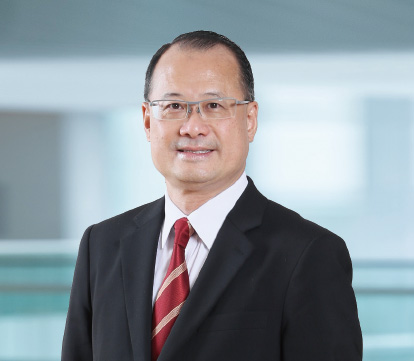
Creating a new era and new landscape
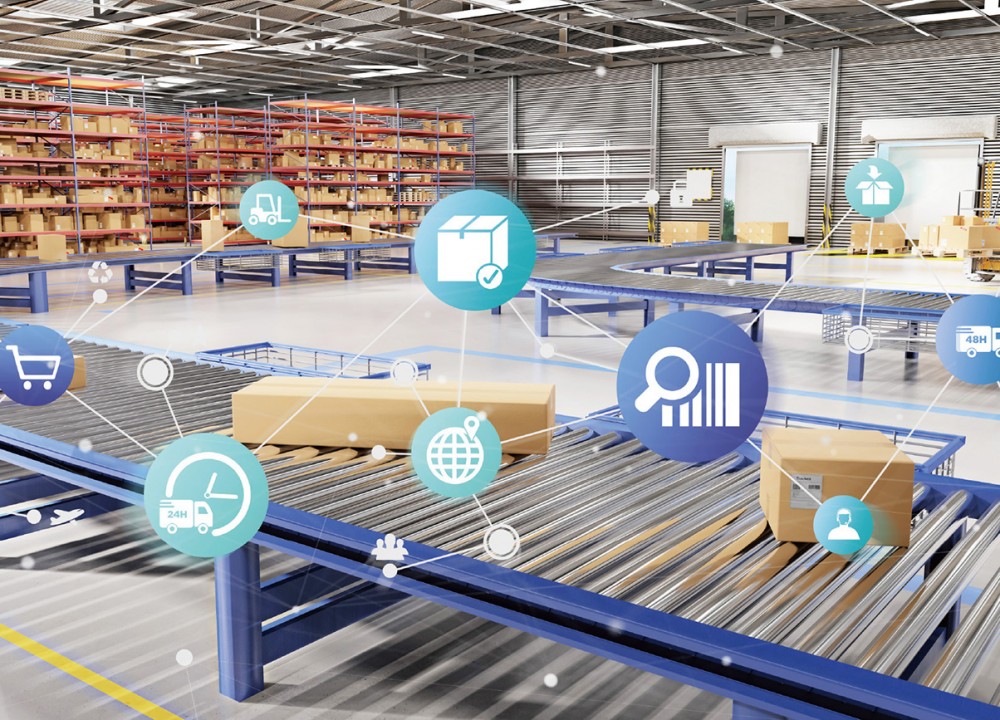 Jonathan Choi, the Chamber’s Permanent Honorary President, said that the RCEP marks a historic change in that it is led by Asian countries. This is because important multilateral economic systems in the past mostly involved Western countries.
Jonathan Choi, the Chamber’s Permanent Honorary President, said that the RCEP marks a historic change in that it is led by Asian countries. This is because important multilateral economic systems in the past mostly involved Western countries.
“The signing of the RCEP symbolizes a shift in the world’s economic center of gravity from the West to the East. To the south of China, Japan and South Korea are the 10 ASEAN countries. Together, they formed the Asian core of 10+3. Later, they became 10+6 with Australia, New Zealand and India. These are the founding members of the RCEP. They then became today’s RCEP 10+5 as India subsequently decided to stay away from it.”
China to play a leading role
Choi added that China will likely play a leading role as the largest economy in the RCEP. He noted that other countries are inextricably linked to China, regardless of trade, import, export or investment. “The RCEP is an Asia-Pacific multilateral free trade region where tariffs will be gradually lowered and bilateral trade and investment policies will be progressively relaxed, which will greatly help promote trade and two-way investment between China and other countries in the region.”
Choi believes that China should actively join more free trade regions to further integrate into the world’s development landscape, “It will definitely help if China and Hong Kong can join the CPTPP that is led by Japan and Canada. In the long run, we should promote the Free Trade Area of the Asia Pacific (FTAAP), which will attract worldwide attention should it eventually come to fruition.”
Hong Kong should seek accession
Over the past few years, Choi has been actively pursuing the implementation of the ASEAN - Hong Kong Free Trade Agreement (AHKFTA). The AHKFTA was finally signed in 2019, marking a major breakthrough for Hong Kong. Choi believes that Hong Kong’s next step should be to actively prepare to join the RCEP, as it has long signed the CEPA with the Mainland, maintains very close economic and trade relations with Japan and South Korea, and has a bilateral trade agreement with Australia. Therefore, Hong Kong’s accession to the RCEP is merely to connect the existing mechanisms.
“Hong Kong’s accession is good for all parties, as it is a free port and has always welcomed investment and trade from all countries. Nevertheless, there must be an enabler in the negotiation process, and the most powerful enabler is none other than our country. Given China’s international standing and the aligned interests between Hong Kong and the Mainland, it is only natural that the country should support Hong Kong’s accession to the RCEP.”
Choi believes that as Hong Kong and the 15 RCEP countries are geographically linked and have traditionally enjoyed very close economic and trade relations, its accession to the RCEP should not be only for lowering tariffs, “Hong Kong is the world’s freest economy and should seek to participate, speak out and put forward opinions in different international organizations in order to strengthen its role and status.” He stressed that it is in Hong Kong’s long-term interest to further expand its circle of friends and enhance its international functions.
Tse Yung-hoi: RCEP is a Product of New Normal in the Global Economy
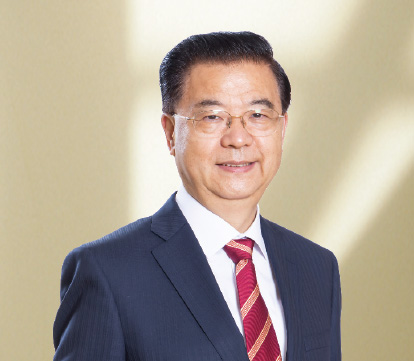
 Tse Yung-hoi, the Chamber’s Vice-Chairman, noted that the RCEP is a product of the new normal in the global economy. The so-called new normal is mainly reflected in three aspects: The first is sluggish economic growth in developed countries; the second is faster growth in emerging countries, where the combined GDP of developing countries had actually surpassed that of developed countries in 2018; and the third is hindrance to globalization amid rising trade protectionizm due to global economic downturn.
Tse Yung-hoi, the Chamber’s Vice-Chairman, noted that the RCEP is a product of the new normal in the global economy. The so-called new normal is mainly reflected in three aspects: The first is sluggish economic growth in developed countries; the second is faster growth in emerging countries, where the combined GDP of developing countries had actually surpassed that of developed countries in 2018; and the third is hindrance to globalization amid rising trade protectionizm due to global economic downturn.
Tse believes that the RCEP will bring many benefits to countries in the region, just like other free trade agreements. The first is “trade creation effect”, as countries in the region will gradually bring 90% of tariffs down to zero, which will prompt some businesses to move to lower-cost locations in the region. Lower production costs will create more bilateral trade and investment in the region. Next is “trade diversion effect”, as the RCEP free trade region’s labour costs will fall to become competitive than those of countries outside the region, resulting in more funds flowing to the free trade region and increase in exports.
RCEP is of great significance to China
China has developed into the world’s second largest economy. In Tse’s view, the next step for China is to gradually transform from a manufacturing powerhouse into a “smart manufacturing” powerhouse, and the RCEP will help China’s industrial upgrading. He pointed out that China can advance the development of the technology industry through cooperation with countries such as Japan, South Korea and Australia. Meanwhile, China can move some labour-intensive industries to lower-cost countries in the region to make space for new ones, which will also help industries upgrade and transform.
In addition, China can use this to strengthen its voice in international trade. “China accounts for 65% of the population and 60% of the GDP of the RCEP region, pointing to a very obvious leading role. In terms of manufacturing, China has complete industrial chains, skilled workers and capital, and from a consumption perspective, it already has the world’s largest middle-income population, which is remarkable.”
Impact on China-US relations
Tse added that the signing of the RCEP also has some implications for the development of China-US relations, as it helps China overcome US containment. Tse explained that after signing the RCEP last year, China immediately signed the EU-China Comprehensive Agreement on Investment (CAI) with Europe, which is also important for China. “As investment is more concerned with long-term sustainability, the CAI is a strategic agreement forming a China-centric Asia-Europe economic circle with the RCEP, which is the last thing the US wants to see.”
He added that the most important thing for the US to dominate the world is a powerful navy. However, the US Navy will be useless if the Asia and Europe continents are aligned with each other.
Further harnessing Hong Kong’s strengths
As for Hong Kong, Tse believes that the RCEP has many positive factors for its economy. For example, many Hong Kong businesses have moved their factories to the Mainland in the early years, but labour costs in the Mainland are not low now. The emergence of the RCEP gives Hong Kong businesses the option to keep their production facilities in the Mainland or transfer them to other RCEP countries. “In fact, some Hong Kong businesses have moved their factories to countries such as Cambodia and Vietnam.”
With regard to investment, Tse noted that Hong Kong's financial markets have always been the Mainland’s “super connector”. Since the Mainland’s reform and opening-up, 50% of the funds flowing into the Mainland for investment have been channelled through Hong Kong. On the other hand, 63% of the funds flowing from the Mainland for investment overseas have also been channelled through Hong Kong. This demonstrates Hong Kong’s unique status. He believes that with the RCEP, more international funds will move to Hong Kong for investment in the Mainland as well as other RCEP countries, which will help further harness Hong Kong's unique strengths.

